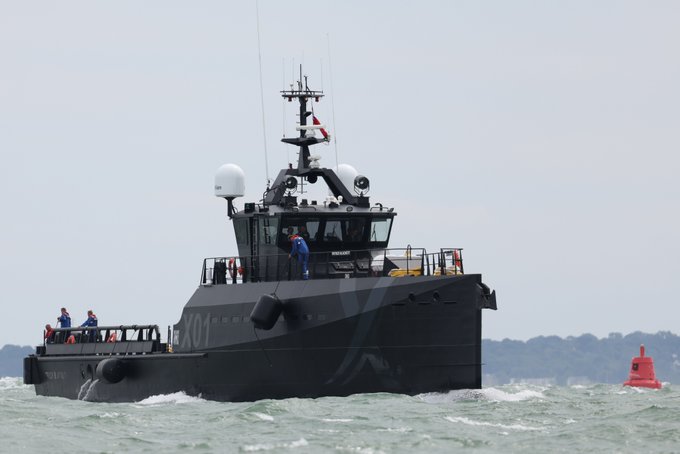
PORTSMOUTH, UK — The Royal Navy welcomed the experimental vessel XV Patrick Blackett (X01) on July 29 in a ceremony at Portsmouth, United Kingdom.
The Royal Navy refers to the new ship, which has the hull number X01, as an “autonomy and lethality accelerator” and a “maritime sandbox,” dedicated to exploring and demonstrating new, innovative technology at sea.
The ship, designed as an offshore support vessel, was acquired from the Dutch shipbuilder Damen and optimized for Royal Navy use. Its inherent modularity allows various systems and capabilities to be installed in the Royal Navy’s PODS (Persistently Operationally Deployed Systems), or secured on deck, and plugged in to the ship’s network to be evaluated.
The 135-foot ship will have a top speed of about 20 knots and have a crew of five. It is not expected to be operated autonomously without a crew.
The ship’s namesake, physicist Patrick Blackett, served in the Royal Navy in WW I and later made groundbreaking contributions during WW II in the field of operational research. He won a Nobel Prize for his work in 1948.
The vessel will be operated as part of the Royal Navy’s “NavyX” organization, which, according to its website, “rapidly develops, tests and trials cutting-edge equipment, with the aim of getting new technology off the drawing board and into the hands of our people on operations at a pace. Operating across all maritime environments — over water, on water, underwater and the littoral. By empowering a team with diverse experience, NavyX will exponentially accelerate our speed of learning and our capacity to procure and integrate these best-in-class technologies.”
- A Day to Remember - September 11, 2023
- Indo-Pacific Maritime Security Exchange will examine emerging capabilities and capacity - July 12, 2023
- Cold Waters Spark Warm Relationship - April 20, 2023



